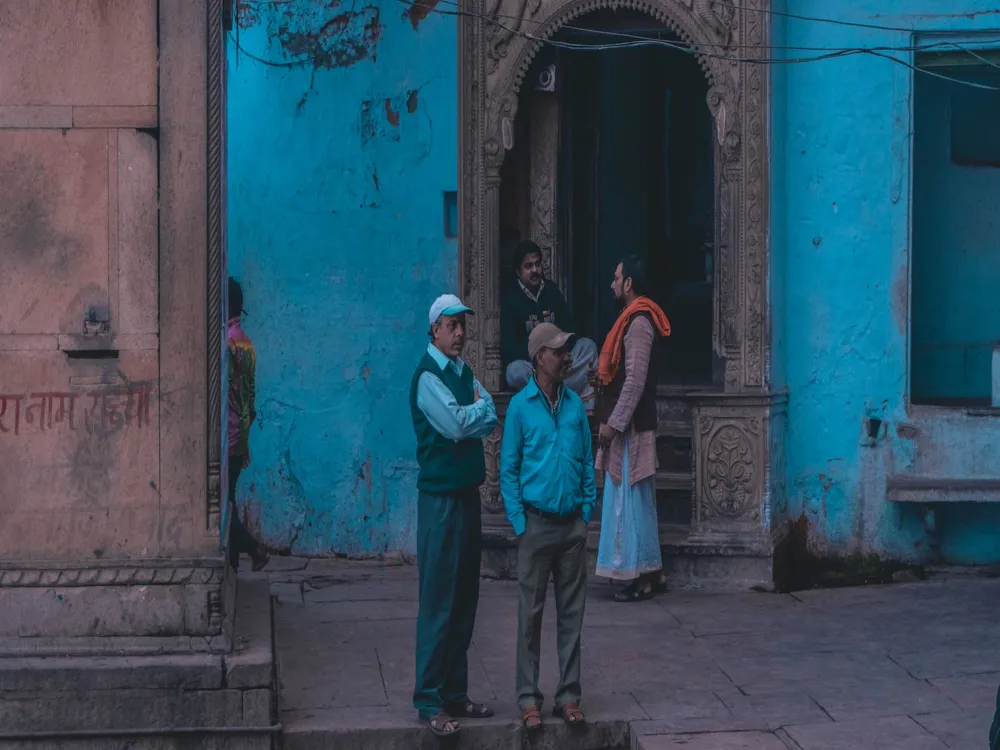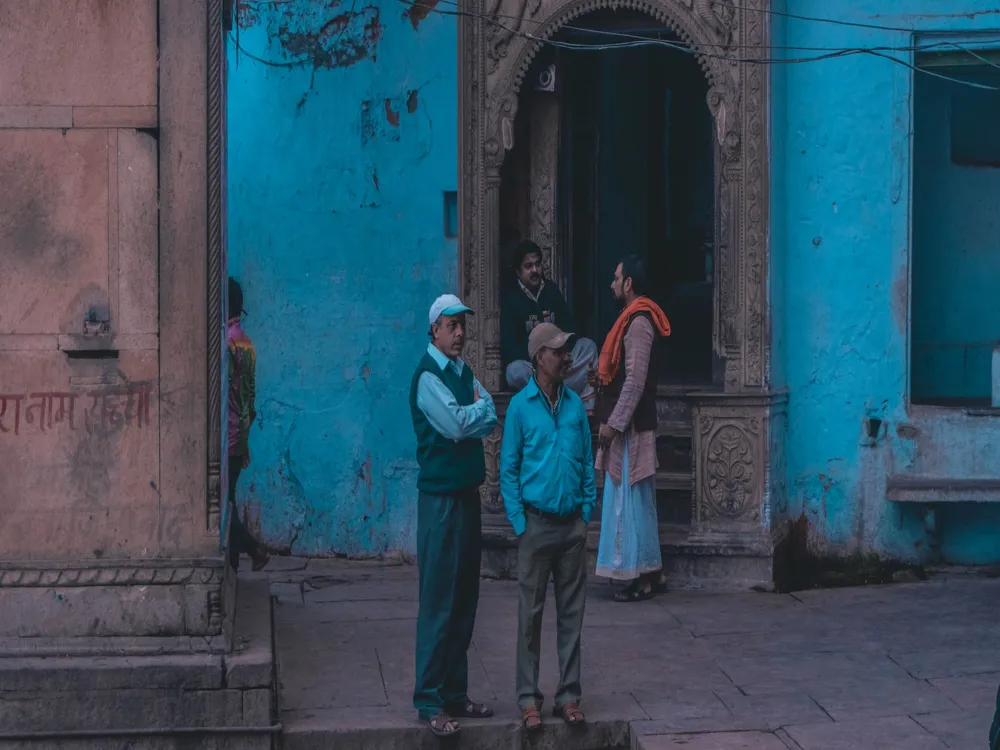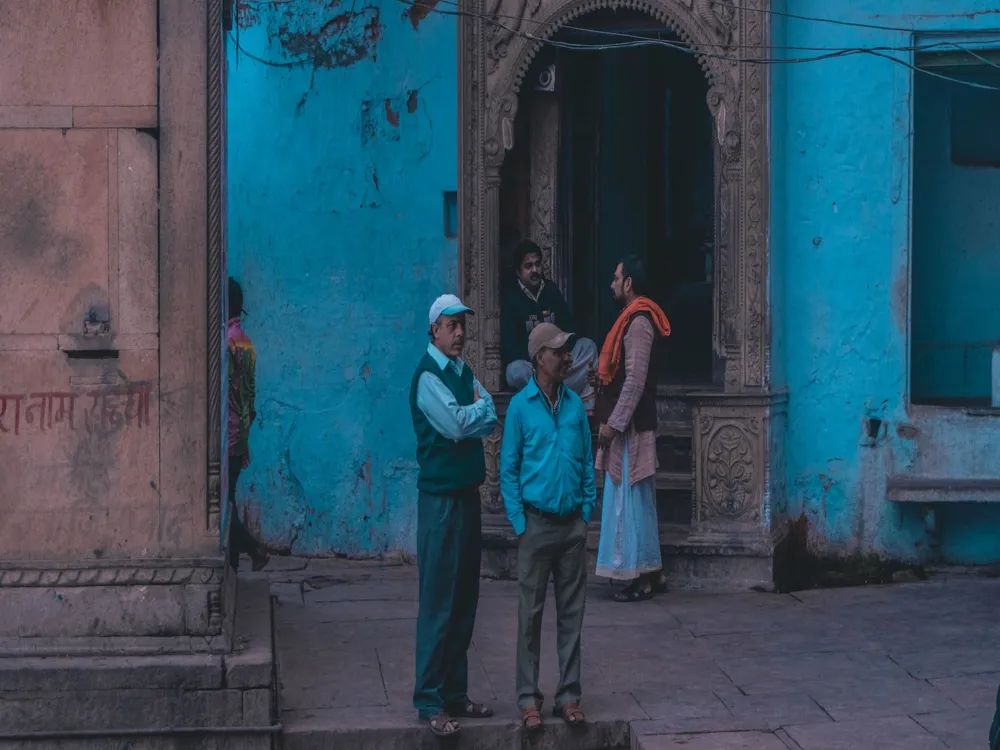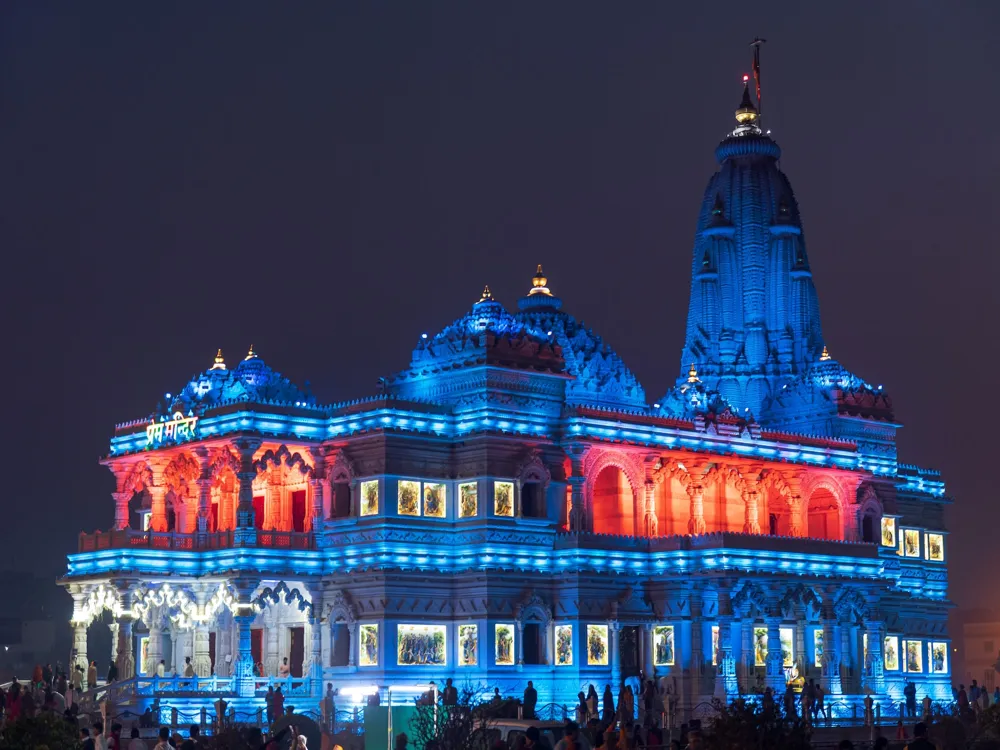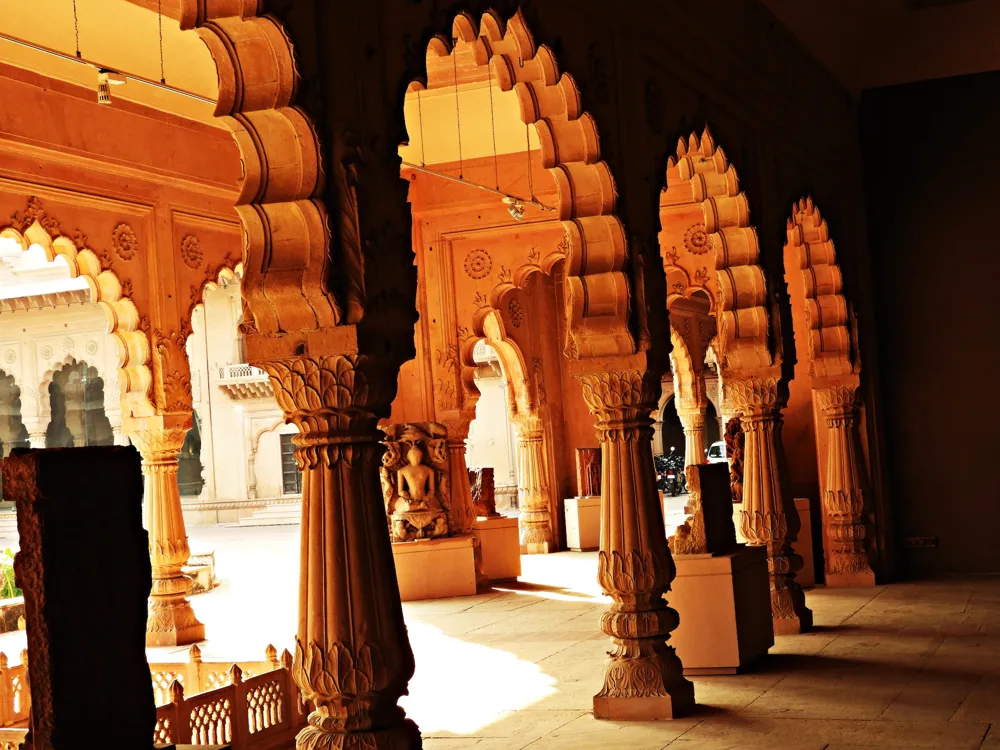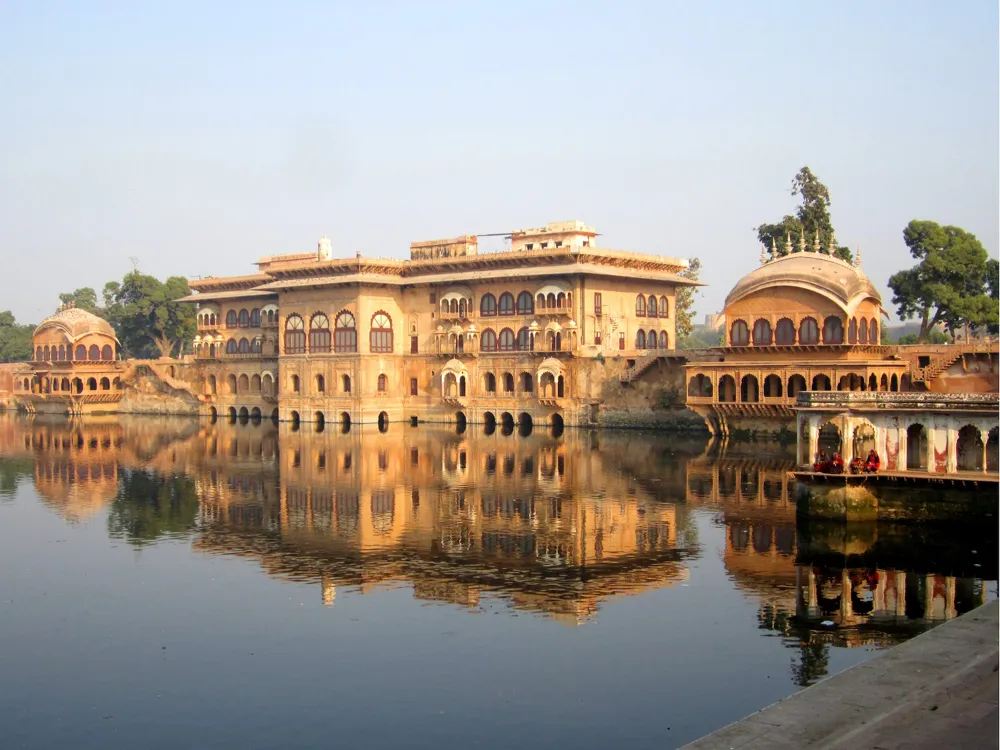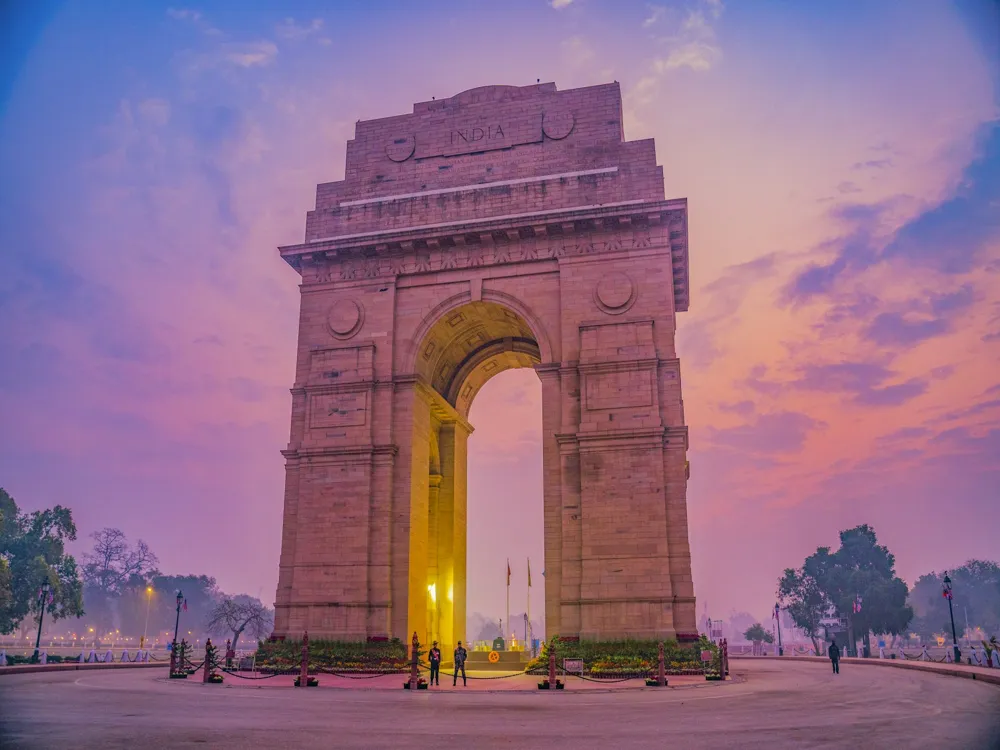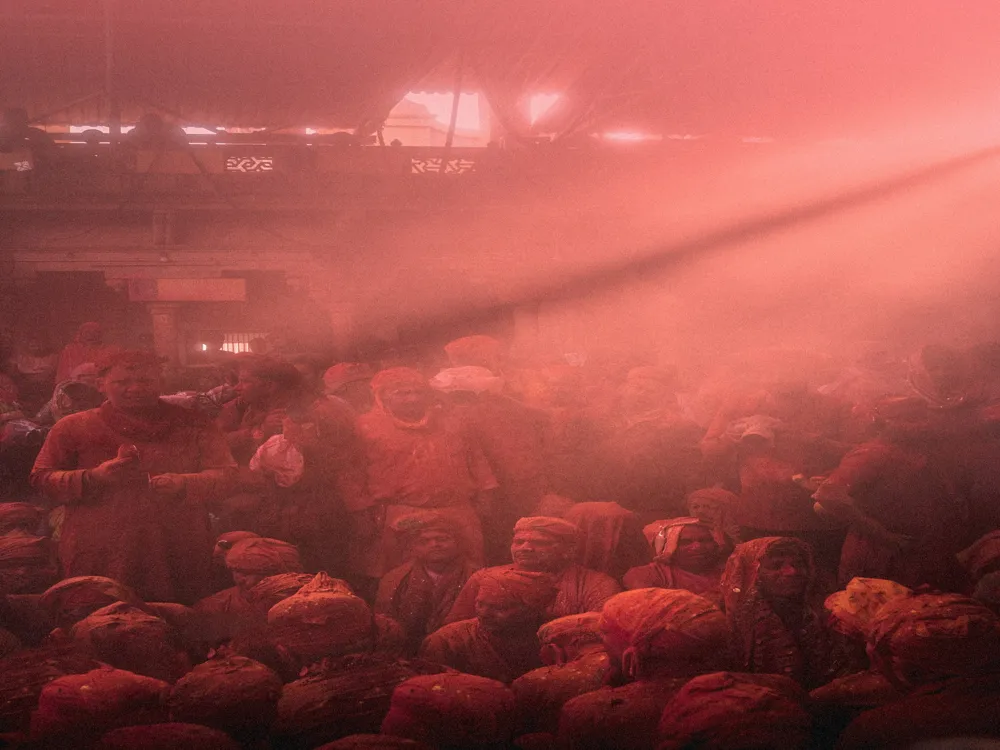Vishram Ghat, a spiritual and architectural marvel, is nestled in the heart of Mathura, Uttar Pradesh. This sacred site holds immense significance in Hindu mythology, as it is believed to be the place where Lord Krishna rested after defeating the tyrant Kansa. The Ghat, situated on the banks of the Yamuna River, is a central hub of devotion and attracts thousands of pilgrims yearly, especially during festivals like Janmashtami and Holi. The history of Vishram Ghat is deeply intertwined with the legends of Lord Krishna, making it a pivotal location in the Vedic scriptures. According to ancient texts, after the monumental battle, Lord Krishna took his holy bath at this Ghat, which led to its name 'Vishram' meaning 'rest'. The Ghat is surrounded by several important temples, including the Bhuteshwar Mahadev Temple, the Murli Manohar Temple, and the Neelkantheshwar Temple, each adding to the spiritual ambiance of this sacred site. Vishram Ghat's significance extends beyond its mythological connections. It serves as a living testament to the rich cultural and religious fabric of Mathura, a city renowned for its deep association with Hindu folklore. The Ghat is not just a religious site but also a cultural hotspot where one can witness the vibrant customs and traditions of Hindu worship. The daily rituals, including the mesmerizing evening aarti where hundreds of lamps are lit and set afloat on the Yamuna, provide a spectacle of devotion and beauty. Exploring Vishram Ghat is a journey through time, offering insights into the ancient religious practices and beliefs that continue to shape the lives of millions. Its location in Mathura, considered the birthplace of Lord Krishna, only amplifies its spiritual importance. The Ghat's serene environment, coupled with the rhythmic chants and the soft glow of the evening lamps, offers a tranquil escape from the hustle of everyday life, inviting visitors to experience a moment of peace and contemplation. The architecture of Vishram Ghat is a splendid example of ancient Indian design, blending religious significance with artistic elegance. The Ghat, primarily made of sandstone, stretches along the Yamuna river, providing a panoramic view of the sacred waters. Its steps, leading down to the river, are not just functional but also symbolize the descent from the earthly realm to the spiritual. The architectural layout of Vishram Ghat is thoughtfully designed to facilitate the religious ceremonies and daily rituals. The series of steps provide ample space for pilgrims to perform their spiritual duties, such as taking a dip in the holy Yamuna, which is believed to cleanse one's soul. The upper platform of the Ghat, adorned with intricately carved pillars and archways, serves as a vantage point for visitors to observe the religious activities and enjoy the serene beauty of the river. The surrounding temples, each a marvel in its own right, contribute to the architectural grandeur of Vishram Ghat. These temples, with their towering spires and detailed carvings, showcase the finesse of ancient Indian craftsmanship. The Bhuteshwar Mahadev Temple, for instance, is an excellent example of Nagara style architecture, characterized by its beehive-shaped shikhara (spire) and intricate stone carvings depicting various deities and mythological scenes. Moreover, the architectural design of Vishram Ghat is not just about aesthetics; it's a harmonious blend of functionality, spirituality, and artistry. The alignment of the Ghat and its structures takes into consideration the religious rituals, the flow of pilgrims, and the natural environment, creating a space that is both spiritually uplifting and aesthetically pleasing. Visitors should remember that Vishram Ghat is a revered religious site. Dress modestly, avoid loud conversations, and maintain the cleanliness of the area to show respect for the place and its spiritual significance. The ideal time to visit Vishram Ghat is during the cooler months from October to March. Additionally, visiting during festivals like Janmashtami or Holi offers a unique experience with special rituals and celebrations. Engaging in the local rituals like the evening aarti can be a profound experience. However, visitors should follow the guidance of the locals or priests to ensure proper participation. While the area is generally safe, it's advisable to take care of personal belongings. Avoid isolated areas after dark and be cautious if approached by overly persistent vendors or guides. Besides Vishram Ghat, Mathura has numerous other temples and historical sites. Plan your itinerary to include these attractions for a complete experience of the city's spiritual and cultural heritage. Vishram Ghat in Mathura is well-connected and easily accessible by various means of transport. The nearest airport is the Agra Airport, located about 60 km away. For those preferring rail, Mathura Junction is the nearest railway station, well-serviced by trains from major cities across India. Upon reaching Mathura, visitors can opt for local transport like auto-rickshaws or taxis to reach Vishram Ghat. The city's road network also makes it feasible to travel by bus or car, with several state-run and private buses operating to and from various cities. Read moreOverview of Vishram Ghat, Mathura, Uttar Pradesh
Architecture of Vishram Ghat
Tips When Visiting Vishram Ghat
Respecting the Sanctity of the Place
Best Time to Visit
Participating in Rituals
Safety and Security
Exploring Nearby Attractions
How To Reach Vishram Ghat
Mathura Tourism
Best Time to Visit Mathura
How to Reach Mathura
Things To Do Mathura
Vishram Ghat
Mathura
Uttar Pradesh
₹ 8,999 onwards
View mathura Packages
Weather :
Tags : Waterfront
Aarti Timings : Summer: Morning: 7:00 AM to 7:15 AM, Evening: 7:00 PM
Winter: Morning: 6:45 AM to 7:00 AM, Evening: 7:00 PM
Boat Rides : INR 30-50 per person
Planning a Trip? Ask Your Question
Mathura Travel Packages
View All Packages For Mathura
Top Hotel Collections for Mathura

Private Pool

Luxury Hotels

5-Star Hotels

Pet Friendly
Top Hotels Near Mathura
Other Top Ranking Places In Mathura
View All Places To Visit In mathura
View mathura Packages
Weather :
Tags : Waterfront
Aarti Timings : Summer: Morning: 7:00 AM to 7:15 AM, Evening: 7:00 PM
Winter: Morning: 6:45 AM to 7:00 AM, Evening: 7:00 PM
Boat Rides : INR 30-50 per person
Planning a Trip? Ask Your Question
Mathura Travel Packages
View All Packages For Mathura
Top Hotel Collections for Mathura

Private Pool

Luxury Hotels

5-Star Hotels

Pet Friendly







